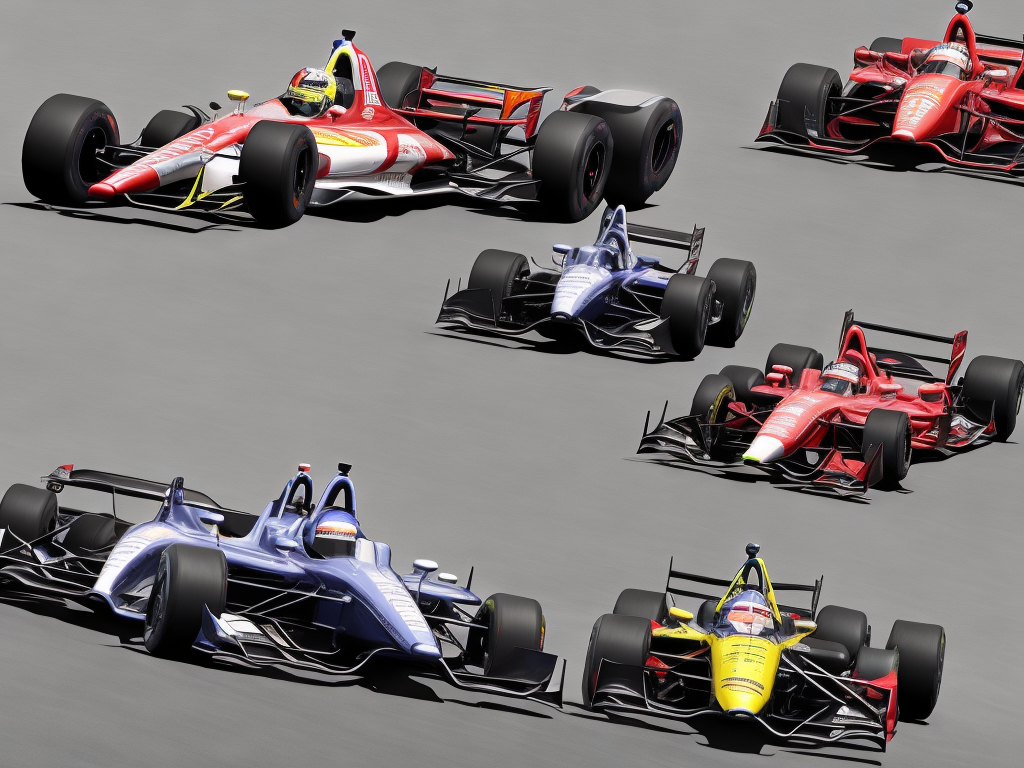
IndyCar and Formula One are two of the most popular auto racing series in the world. While they might seem similar to an untrained eye, they are two different racing disciplines that require different skills and techniques.
The main difference between IndyCar and F1 is that IndyCar is a predominantly oval-based racing series, and F1 is a road course-based racing series. IndyCar has a more American spirit of racing, which is primarily oval tracks, while F1 is dominated by European racing with a focus on road courses. Both IndyCar and F1 cars are built for speed and produce high levels of horsepower, but the cars have distinct differences.
IndyCars are exotic, single-seater cars with open-wheel, equipped with large, flat wings on front and back that provide downforce and grip. They have high acceleration and top speeds of up to 240 miles per hour, which is faster than F1 cars on oval tracks. The oval tracks range anywhere from 1.5 to 2.5 miles in length and require drivers to maintain an uninterrupted high-speed pace for multi-hour races. Drivers have to stay alert and concentrate for an extended period, as any mistake can be fatal, and most races typically last over 200 laps.
In contrast, Formula One cars are sleeker and lower in profile, with more angular looks and are built more for precision and handling on road courses. F1 cars are designed to take corners at extremely high speeds and go from 0 to 60 mph in just two seconds. The tracks are usually 2-5 miles in length and take 1-2 minutes per lap, with anywhere from 45-70 laps racing distance. F1 races require a more significant emphasis on strategy and the right tire choice, fuel management, and multiple pit stops for adjustments. The cars are incredibly sensitive to changes in air pressure, temperature, and humidity, and the options for customization are endless.
Another difference between the two genres of racing is the tires. IndyCars use durable, slick grooves tires that have better grip for the heavier car on oval tracks, while F1 cars use soft, low-profile, hand-cut slicks tires for maximum grip on road courses. IndyCar drivers rely more on mechanical grip, while F1 drivers are more focused on aerodynamics and the performance of their tires.
The teams in the two different racing styles are also very different. F1 is a more closed, exclusive world with more regulation and restrictions and teams scattered worldwide. F1 teams have some freedom in car design, but rule changes are constantly shifting, making it a race to keep up with the changes. IndyCar teams are more cooperative, with standardized cars and engines, providing a more level playing field, with more emphasis on driver skill. IndyCar has a stronger sense of community, with drivers often celebrating together after a race.
Safety is paramount in any form of auto racing, but the two worlds achieve their safety into different ways. IndyCar uses a barrios racing system to prevent cars from spinning out of control and sliding into other vehicles. They also use camera detection systems to warn drivers when they are approaching a slow or stopped car. F1 places more emphasis on track design and safety barriers, and they have a significant medical support network with doctors, ambulances, and helicopters on standby. F1 has a more safety-focused approach to racing, while IndyCar is more about controlling the chaos of speed.
Both IndyCar and F1 recognize their differences and respect each other as distinct disciplines. The drivers in both arenas are highly skilled, well conditioned, and have mental fortitude beyond most athletes. Each sport requires unique skills and expertise, and both have their fan bases that appreciate the technical aspects of racing, the speed, and the glamour of it all. While the two styles of racing might not cross paths frequently, both continue to capture our attention and imagination.
 Self-Instruct
Self-Instruct